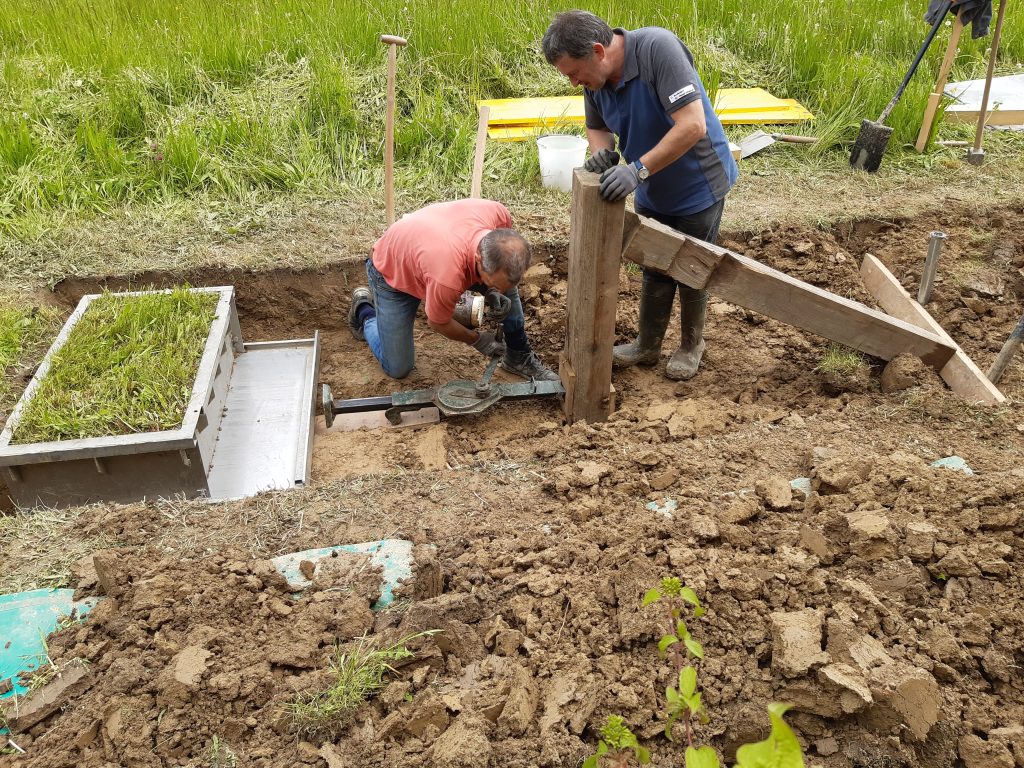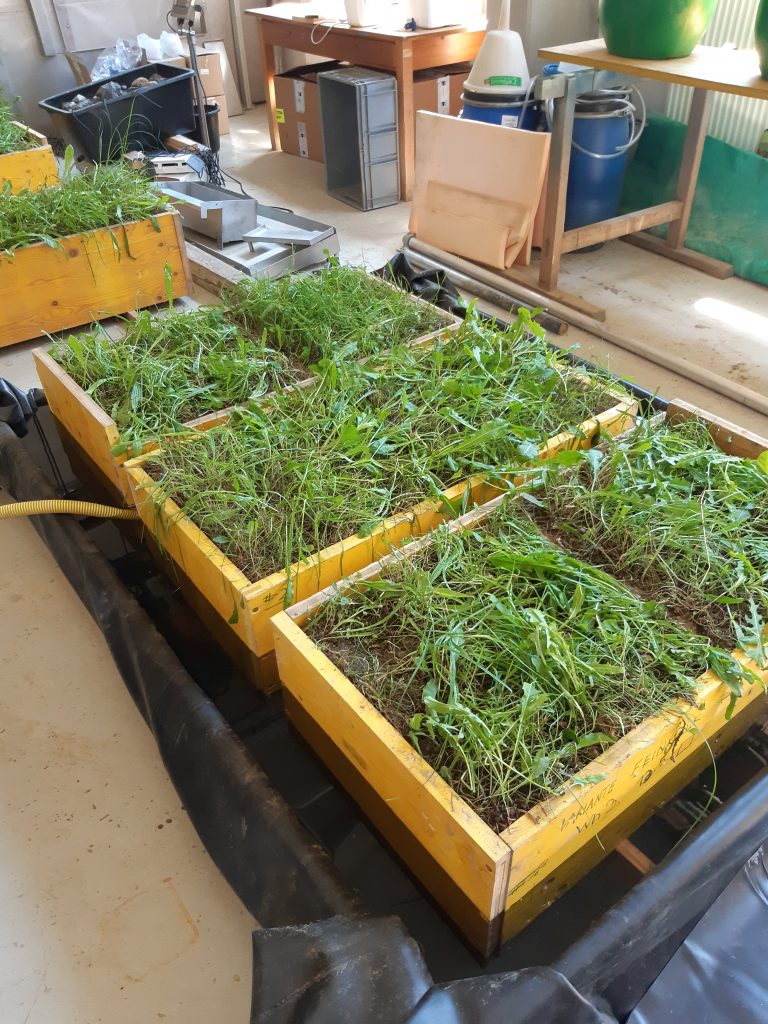Artificial runoff experiments are a part of working package 2, in which we seek to analyse the response of buffer strip soils to different runoff scenarios. To improve the meaningfulness of the data, we plan to combine undisturbed soil monoliths to larger soil plots, taking advantage of both the flexibility of indoor experiments and the realism of undisturbed soils. To our knowledge, this has not been done before. Therefore, we started a preliminary trial to ascertain that combining blocks of soil does not interfere with the runoff characteristics.

To this end, we took six undisturbed soil monoliths from a buffer strip. Half of them were cut in the middle and then recombined. The monoliths were then used for a runoff experiment, during which the blocks received a constant flow from a tank, with water spiked with phosphorus (P) and salt tracers. Most water left the monoliths as surface runoff, but substantial amounts were also recorded as drainage water (passing through the soil body, probably due to the natural macropore network) and bypass water (e.g. water that leaves the monolith at its sides). Interestingly, we noticed an enrichment of the surface runoff with P, which means that the buffer soil acted as a P source at it surface, rather than a sink.

We found no significant differences between cut and uncut monoliths. In fact, it was apparent that the inherent variability between the monoliths (due to the inevitable spatial heterogeneity of the soil) was much larger than any effect that the cutting could have had. We conclude that a careful combination of soil monoliths is a valid procedure and plan to further pursue this approach for the main runoff experiment starting next year.
